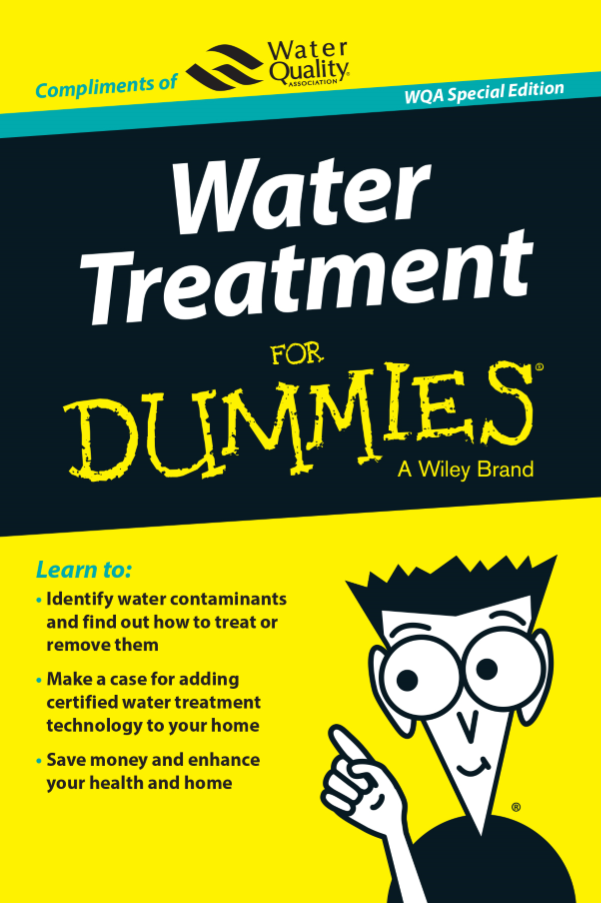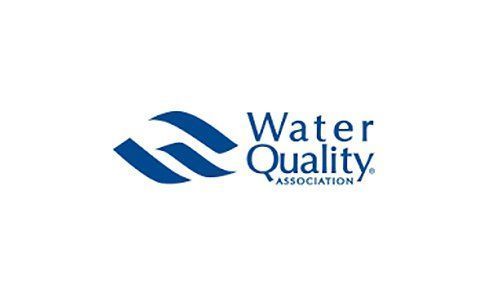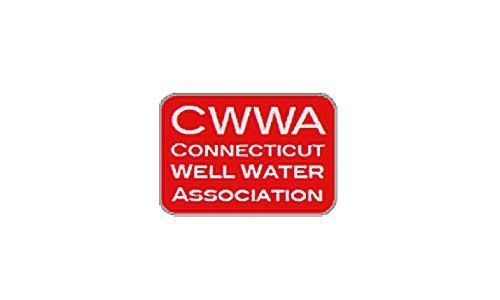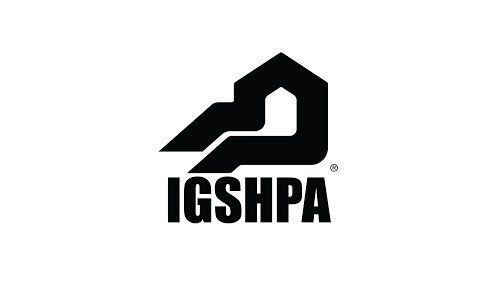Water Treatment Services and Testing
Keep Your Water Fresh and Safe
When selecting a water treatment system, you must verify that the technology is safe and effective. One way to ensure that water treatment products are both safe and effective is to use only certified water treatment devices.
Certification by NSF to NSF / ANSI standards means that the manufacturer's performance claims have been validated and that the materials used in the construction of the product have been determined by toxicologists to be safe for use with potable water.
In addition, NSF ensures that the product literature is correct and not misleading. Through ongoing certification audits of manufacturing facilities and periodic retesting of the system, Connecticut Valley Artesian Well Co Inc also ensures that the water treatment products we certify continue to meet rigorous public health standards year after year.
Types of Water Treatment and Testing
- Carbon dioxide
- Chlorides
- Color
- Copper
- Hard water
- Hydrogen sulfide
- Iron
- Iron algae
- Lead
- Low pH
- Manganese testing
- Radon testing
- Sediment
- Sodium
- Sulfates
- Sulfur-reducing bacteria
- Total dissolved solids
- Turbidity
Hard Water
Hardness in natural well water supplies varies from 1 to 2 gpg (grains per gallon) to over a hundred gpg in certain areas of western Massachusetts and northern Connecticut. Hardness is primarily composed of combinations of elemental calcium or magnesium with metallic ions.
Groundwater is typically found to have a higher level of hardness than surface aquifers due to its prolonged contact over thousands of years with the bedrock formation.
Common Problems Caused by Water Hardness:
- Film and scale can accumulate on tiles and bath/kitchen fixtures.
- Hard water minerals precipitants can clog pipes and reduce water flow.
- Calcium and magnesium ions precipitate soap, forming a curd that causes the soap-scum "bathtub ring."
- An invisible soapy film on the skin can leave it feeling dry.
- Excess filmy shampoo residue on hair can leave it looking dull and limp.
- Fibers of clothing can wear out prematurely due to the friction of calcium deposits.
- Deposits of scale shorten the life of water heaters.
- Utility bills can increase due to accumulated scale in the water heater. Scale is a poor conductor of heat, increasing the energy needed to heat water.
- Glasses and dishes can remain with a white film and be spotted even after cleaning.
- Reduced lathering action can leave clothes looking gray, dingy and lacking their original bright colors.
- Hard water can significantly affect the taste of tea and coffee.
Conditioning Hard Water
Hardness is most effectively removed from household water supplies by a modern high-efficiency water softener utilizing the ion exchange process. In this method, the hardness is absorbed by an ion exchange material and a chemically equivalent amount of sodium or potassium is released into the water.
These non-nuisance minerals do not form the characteristic scale. When the supply of sodium or potassium in the media is exhausted, it is restored by flushing a strong solution through the media tank when household water is not in use.
After the brine and the hardness are rinsed to a dedicated location with fresh water, the softener is regenerated and ready for another cycle. The ion exchanger is not consumed by this process.
Water Conditioning Utilizes Proportional Exchanges of Sodium or Potassium
A water conditioner does not add "salt" to the water. It only exchanges a proportional amount of sodium or potassium relative to the nuisance minerals and unique chemistry.
Some High Efficiency (H.E.) systems use as little as 4 1/2 pounds per regeneration and a negligible 31 gallons to clean the media bed. This allows the system to go several years without the need to fill the regeneration tank. Every system will be tailored according to the water quality and household water demands.
Reverse Osmosis (RO) Systems
If desired, a reverse osmosis (RO) system can treat the exchanged sodium or potassium for your drinking and cooking supply.
- Soft Water: 0-1 grains per gallon (gpg)
- Slightly Hard Water: 1-3.5 grains per gallon (gpg)
- Moderately Hard Water: 3.5-7 grains per gallon (gpg)
- Hard Water: 7-10.5 grains per gallon (gpg)
- Very Hard Water: Over 10.5 grains per gallon (gpg)
The recommended limit for hardness is < 4 gpg.
Iron
In some respects, iron (Fe) in a water supply is a worse problem than hardness. This is because such a small amount of metal can cause severe staining. As little as 0.3 mg/l can cause the familiar "rust" brown stains on sinks, dishes, fabrics, etc.
The various forms of iron can impart a "metallic" taste to the raw water or significantly distort the flavors of beverages made in the home. Iron particulate in a solid state is detrimental to the flow of water over time due to the increased friction loss to the distribution system.
These restrictions reduce the ability of the pump to push the volume and pressure of the water to the household fixtures.
Iron Can Occur in Water in Two Different Forms or a Mixture of Both:
In this area, iron may be present in water in either of two primary forms or a mixture of both.
Soluble Iron (Ferrous Bicarbonate)
A water supply containing soluble iron (Ferrous Bicarbonate) may be clear when it is drawn from a household tap. Once the same iron-laden water has been exposed to the air for a while, the well-known reddish-brown sediment will appear. It is this insoluble form (Ferric Hydroxide) that causes the troublesome orange/brown stains.
Insoluble Iron (Ferric Hydroxide)
Iron's insoluble form (Ferric Hydroxide) causes troublesome orange/brown stains.
Colloidal Iron
In rare circumstances, a third state of iron can be observed with the naked eye. Colloidal iron is so small they stay in suspension giving the water a red-pink, turbid cast. It stays very highly dispersed and has a specific gravity almost equal to that of water.
These iron particles are often so small (sub-micron) that they can take days to weeks to begin to settle out of storage tanks. Colloidal iron can be treated by an innovative "sub-micron" hollow fiber technique known as ultrafiltration (UF ≥ 02µ).
Iron in Water Can Be Treated Using a Variety of Technologies
Depending on the influencing factors of the water quality, pumping system and household water demand, iron can be treated with multiple technologies. These include, but not limited to:
- Ion exchange technology (H.E. water softener)
- Combination filter/softener
- "Pressurized oxidation" technique using oxygen from the air to react minerals followed by filtering (Iron Curtain™)
- Multimedia filter (none-soluble iron)
- "Oxidizing catalyst" media filter (Simplus™ series)
- Chemical oxidation/precipitation (chlorine injection)
Manganese Testing
Manganese (Mn) in water is not as widespread as iron but can create severe black staining at 0.05 mg/l. Depending on the concentration, a bitter metallic taste can be present in the raw water. Manganese has recently been added with a health action level of .5 mg/l due to its toxicity to the body caused by prolonged exposure.
The primary concern is related to the nervous system producing a syndrome that resembles Parkinsonism. Manganese treatment equipment is often identical to iron, with a modification to filtration bed size. Soluble manganese is treated with a water softener (cation exchange) or fusion ozone/Greensand Systems when dealing with concentrations less than 1.0 ppm.
If insoluble manganese is present, we often recommend a combination ozone or Birm filter, followed by a high-efficiency water softener or independent backwashing units in series. In cases with high levels and/or combined with hydrogen-sulfide and sulfur-reducing bacteria, chlorine oxidation is often required.
- The U.S. EPA has set the secondary recommended limit (SMCL) for total manganese at 0.05 mg/l.
- The U.S. EPA preliminary Health Action Level for total manganese at 0.5 mg/l.
- MA EPA has set a “Precautionary Health Advisory” for infant consumable water at 0.3 mg/l.
- World Health Organization action level for total manganese is set at 0.5 mg/l.
Sediment
Small rock particles can be drawn into the water distribution system due to interconnected veins of the well running through a soft spot or unconsolidated portion of the deeper bedrock geology.
The flow of water drawn to the intake of the pump can be enough friction to flake some grains of stone over time. This is not "dirt." It is from a clean and sealed part of the bedrock aquifer.
That being said, these particles can be abrasive to the impellers of the pump, buildup on the bottom of the hot water heater and behind the toilet tank within the house. These same particles have the potential to cause severe problems with fixtures and mixing valves throughout the house.
Large Selection of Flow Options and Filtration Cartridges
The type of materials and flow options of filtration cartridges has come a long way in the past decade.
A typical installation to a modern home has increased to a new standard of 4½ x 10” cartridges and 4½” x 20” cartridges for higher pressure systems with minimal filter element replacement. The most common type of filter matrix used in modern inline filters is five microns (5µ), 25 microns (25µ) and 50 microns (50µ) high-flow cartridges.
The filter housing is often required to be mounted to the basement wall with 1” or 1½” ports on the head itself. Although state-of-the-art in years past, the 2½” x 10” has primarily been discontinued for new installations. The cartridge may have flowability, but the ¾“ ports on the housing reduce down to ½” internal diameter.
Most new houses are plumbed with 1”, 1¼” or 1½” plumbing off the well tank. If the amount of material being collected requires a frequency of cartridge replacement of two months or less, an automatic backwashing media filter may be an option.
Frequency of Cartridge Replacement Considered With Each Installation
The size and volume of material must be matched with the flow requirement of the pumps. The goal is to hold the greatest amount of targeted material, without causing a reduction of pressure. The frequency of cartridge replacement should be considered for each installation.
***DO NOT USE A SINGLE-STAGE ACTIVATED CARBON CARTRIDGES FOR SEDIMENT OR MINERAL REMEDIATION. THEIR PRIMARY MODERN APPLICATION IS TO DE-CHLORINATE CITY WATER, LIGHT-DUTY HYDROGEN SULFIDE ODOR OR POST-TREATMENT "POLISHING" OF THE WATER. THERE ARE INCREASED FLOW (G.A.C. RADIAL) CARTRIDGES AVAILABLE FOR THE RIGHT APPLICATION.***
If the amount of material is significant enough to cause premature wear and tear to the submersible pump, then protection starting in the well itself can be added. This comes in two basic techniques.
The first option is a physical shell around the submersible pump known as a "sub guard" that is rated for 8 GPM and 16 GPM. The second is known as a Lakos Separator™. The design goes around the submersible pump and imparts a centrifugal action to the water entering the unit. The larger rock particles are driven outward and away from the pump intake.
Both types of units must be selected by a water treatment professional according to the type of pumping system, gallons per minute output, depth of the pump, depth of well, size of material and the amount of targeted particles.
Low pH
pH is the measurement of hydrogen ion activity in the water supply. This is also known as an "acidity" level. The pH scale ranges from 0 to 14, 7 being neutral.
Any pH at or below 6.9 in well water has some corrosive tendencies and can deteriorate plumbing fixtures. A pH reading above 7.0 is basic and shows no corrosive tendency.
An actual high pH reading (pH ≥8.5) in untreated water is uncommon in this part of New England. A high pH may be unique to the local geology, a newly constructed well artificially increased through the drilling process, surface water intrusion or sample error.
Treating Hardness and Raising pH With a Combination System
pH correction is most often accomplished using a conventional "acid neutralizer" utilizing a calcite media blend to raise the pH.
Since the hardness of the water increases when using calcite, it is often recommended to follow the pH-adjusted water with a high-efficiency combination acid neutralizer/softener, or independently backwashing units in series. The hardness added by the neutralizer is removed and the pH remains neutral.
Offering Special Water Treatments for pH Level Below 5.6
pH below 5.6 and/or found in combination with high levels of naturally occurring carbon dioxide can require special types of treatment. The most common of these categories is known as an "injection" system that adds a food-grade solution of soda ash or sesquicarbonate to the well water. This antacid is similar to what is found in baking soda or Tums™.
The recommended range for neutral well water is a pH range of 7.0 to 8.5.
Carbon Dioxide
Carbon dioxide (CO2) is a gas found dissolved in almost every water supply to some degree. In some cases, it is absorbed from the air, in others, it is introduced along with many organic acids from decaying vegetation matter in the ground from the geologic past.
Carbon Dioxide Reacts With Water, Causing Corrosive Effects to Metal
Carbon dioxide reacts with water to form a weak carbonic acid. It is this form of acidity that produced the major objection to its presence because of its corrosive effect on all metal surfaces.
In most water supplies, the alkalinity present is high enough to neutralize the acid's effect. However, in certain local areas, this is not the case and the removal of the carbonic acid is necessary.
Removing Carbon Dioxide From Well Water With High pH Solutions
Carbon dioxide is removed by injecting a high-pH solution (soda ash or sesquicarbonate) into the incoming well water. A flushable contact tank is plumbed after the injection point to allow the high-pH solution to react with the raw water for a calculated duration of time.
The pH, volume of water being pumped (gallons per minute), pressure and mineral content all play a factor in the design of the system.
The recommended limit for CO2 is 15 ppm.
Hydrogen Sulfide
Hydrogen sulfide gas (H2S) produces a disagreeable "rotten egg" or "sulfur" odor and taste. In some cases, the odor may be noticeable only when the water is initially turned on or when hot water is run.
The heating process can cause the dissolved gas to more readily come out of the solution, once depressurized. This odor can be especially offensive in a shower.
Hydrogen Sulfide Gives Off a Rotten Egg Smell and Tarnishes Silver
Aside from its obnoxious odor, hydrogen sulfide also causes very rapid tarnishing of silver. The dissolved gas can also leave a black residue on various fixtures over time.
A nuisance associated with hydrogen sulfide includes its corrosive tendencies to metals such as iron, steel, copper and brass over time. Coffee, tea and other beverages made with water containing hydrogen sulfide may become discolored and the taste of cooked foods altered.
Where Does Hydrogen Sulfide Come From?
Hydrogen sulfide gas is naturally formed from decomposing underground deposits of organic matter such as decaying plant material in the local primordial geological history.
Water Heaters are Common Culprits for Hydrogen Sulfide Odors
Occasionally, a hot water heater alone is the source of hydrogen sulfide odor. The base components are naturally occurring in the raw water supply, but only create the characteristic "rotten egg" odor when exposed to the magnesium corrosion control rod present in hot water heaters.
When this occurs, the composition of the anode rod can chemically reduce naturally occurring sulfates to hydrogen sulfide. As long as the sulfur odor is 100% on the hot water side only, a plumber can replace the anode rods with another material according to the manufacturer's specifications and sanitize the system.
- Treating Water With Hydrogen Sulfide
Oxidizing catalyst media filter (Simplus series) - Pressurized oxidation (Iron Curtain™)
- Proportional chemical oxidation/precipitation (chlorine injection system)
The Best Way to Detect Hydrogen Sulfide is With the Olfactory Sense
Hydrogen sulfide is in a gaseous state when released from the pressurized water system and cannot be collected in a standard sample bottle for analysis. Utilizing the olfactory sense in combination with the classification of the wells other characteristics is the most useful tool available.
If you smell it, it is present. The characteristic smell is detectable when as little as 0.25 parts per million are present.
The recommended limit for hydrogen sulfide is < 1.0 ppm.
Sulfur-Reducing Bacteria (S.R.B.)
This naturally occurring process is far rarer in this area than the mere presence of hydrogen sulfide. It has been present in the earth's crust for billions of years and uses elemental sulfur and sulfates as an energy source.
This non-pathogenic S.R.B. lives in oxygen-deficient environments such as some wells, plumbing and heating systems. These bacteria usually flourish in the environment on the hot water side of the distribution system once introduced.
Shock Chlorinating Well Bore and Plumbing Infrastructures
When sulfur-reducing bacteria are naturally occurring, proportional chlorine injection followed by contact tanks is often required to neutralize, settle and filter the reacted material.
Whole house post-treatment chlorine removal is standard on all Connecticut Valley Artesian Well Co installations. Well bore and plumbing infrastructure should be shock chlorinated before the new treatment system is commissioned.
S.R.B's Affect Water Appearance and Do Not Pose Health Risks
The EPA does not have guidance or additional information related to the presence of sulfur-reducing bacteria in drinking water because sulfate is classified under the secondary maximum contaminant level (SMCL) standards based on taste, odor, color, and the corrosive and staining properties of the water.
Sulfur-reducing bacteria and sulfur-oxidizing bacteria are related to water appearance problems. They pose no known health risks.
Iron Algae
On rare occasions, a unique subcategory of iron can exist in the local geology. Organic iron is not truly a mineral but is the troublesome byproduct of various forms of "iron algae." They gain their energy from the oxidation of ferrous iron to ferric iron to "fix" carbon dioxide into organic molecules necessary for their existence.
They will proliferate if they have a continuous supply of ferrous iron and air/oxygen to metabolize ferric iron into their cell structure. The deposits are in a gelatinous form of ferric hydroxide iron compounds that build up in the water system. They have the potential to cause pump encrustations, pipe encrustations, hot water problems, staining and create foul-tasting water.
Accumulated standing water with an iridescent (rainbow) surface reflection can be a telltale sign of its presence. Shock chlorination of the well bore and chlorine injection is often utilized to remove and/or control the problem. A sister form of organic manganese can exist in Northern Connecticut and Western Massachusetts.
Organic irons are not listed by the U.S. Environmental Protection Agency (EPA) as either primary or secondary contaminants (SMCL). In that of themselves, they are classified as posing no known health risks.
Radon Testing
Radon is an invisible, odorless gas that is the natural radioactive decay product of uranium and thorium elements found throughout the earth's crust. Radon gas is considered harmless when dispersed in outdoor air but can be a more significant health hazard when trapped in buildings.
Radon Gas Can Be Released in Your Homes, Causing Inhalation Risks
If your water contains high levels of radon, the radon gas escapes into the household air potentially adding substantial levels whenever water is in use.
The EPA says, "The radon in your water supply poses an inhalation risk and an ingestion risk. Research has shown that your risk of lung cancer from breathing radon in air is much larger than your risk of stomach cancer from swallowing water with radon in it."
Everyone has some level of radon in the water supply. The most important fact is "how much" is found in your supply and what impact it has on the surrounding air quality. The only way to know is to test the individual raw water. If a significant level is found, you treat it.
Connecticut Valley Artesian Well Co Inc will only install the aeration technique for radon remediation. In this process, filtered air is bubbled up through the depressurized well water. The gas is safely vented outside to above the roofline where it is harmlessly vented. The water is then re-pressurized to supply the household with a radon content of less than 100 pCi/L.
Sulfates
Trace levels of sulfates are found in most natural water supplies. Sulfates do not generally contribute to taste unless the amount is extremely high. However, at concentrations above 30 to 40 gpg, magnesium and sodium sulfate can act as a laxative to those people not accustomed to the water.
High-level sulfates can also leave a white mineral deposit/film on glass, dishware and stainless steel surfaces.
Removing Sulfates From Water With Multistage "Point of Use" Reverse Osmosis
Sulfates can be most efficiently reduced only by a multistage "point of use" reverse osmosis (RO) unit. Storage of treated water is sized according to household and family needs for drinking and cooking.
An RO-appropriate captive-air tank can range from one-and-a-half gallons to over 20 gallons (total volume). These storage tanks are commonly located under the kitchen sink or in the basement near the point of use.
All systems include an integrated electronic monitoring system that tests the total dissolved solids (TDS) in both the raw and treated water. This ensures the purity and function of the system.
The U.S. EPA deems safe levels of sulfates at 500 mg/l (29.2 gpg) in drinking water and secondary drinking water regulations (SMCL) for sulfates at 250 mg/l (14.62gpg) due to taste.
Total Dissolved Solids (T.D.S.)
Total dissolved solids (TDS) are the total of all ionized minerals and metals dissolved in water. Ionized minerals and metals are divided into two categories: cation and anion.
The cation minerals and metals have positive charges while the anion minerals and metals have negative charges. The common ionized minerals are alkalinity, chloride, hardness, iron, manganese, potassium, sodium and sulfate.
High TDS water above the 500 mg/l range can create mineral deposits in the plumbing system and appliances.
Removing TDSs From Water With Multistage "Point of Use" Reverse Osmosis
Total dissolved solids can be most efficiently reduced only by a multistage "point of use" reverse osmosis (RO) unit. Storage of treated water is sized according to household and family needs for drinking and cooking.
An RO-appropriate captive-air tank can range from one-and-a-half gallons to over twenty gallons (total volume). These storage tanks are commonly located under the kitchen sink or in the basement near the point of use.
All systems include an integrated electronic monitoring system that tests the total dissolved solids (TDS) in both the raw and treated water. This ensures the purity and function of the system.
The U.S. EPA has set the secondary recommended limit (SMCL) for T.D.S. at 500 mg/l.
Chlorides
Trace levels of chlorides are found in most water supplies. Chloride is a component of common salt and creates a familiar salty taste.
Effectively Remove Chlorides With Point of Use Reverse Osmosis
Chlorides can be most efficiently reduced only by a multistage “point of use” reverse osmosis (RO) unit. Storage of treated water is sized according to household and family needs for drinking and cooking. An RO-appropriate captive-air tank can range from one and a half gallons to over twenty gallons (total volume).
These storage tanks are commonly located under the kitchen sink or in the basement near the point of use. All systems include an integrated electronic monitoring system that tests the total dissolved solids (TDS) in both the raw and treated water. This ensures the purity and function of the system.
The US EPA has set the secondary recommended limit (SMCL) chlorides at 250 mg/l (14.62 gpg).
Sodium
Sodium can be naturally occurring in all drinking water at a wide range of levels. The EPA does not have an MCL for sodium, but it is recommended that persons suffering from high blood pressure not consume water with levels of sodium greater than 20 mg/L for an extended period.
Sodium can impart a salty taste to water at levels above 200 mg/l. A point of use reverse osmosis system can be used to treat a wide range of levels.
Copper
Copper can be found to be naturally occurring in some areas of our local geology. A far more commonly occurring source is from the water distribution system itself as a result of corrosion from pipes and fittings.
At high levels, copper can cause a bitter metallic taste in water and result in blue-green stains on plumbing fixtures.
Treatment Options Vary, Depending on The Water Source
Depending on the source, treatment options include raising the water's pH, a large capacity "whole house" water conditioner sized to naturally occurring copper levels and other occurring minerals (ion exchange).
Whole House Filtration Systems Combined With Multistage Reverse Osmosis
A "whole house" filtration can be followed by a multistage "point of use" reverse osmosis (RO) unit. Storage of treated water is sized according to household and family needs for drinking and cooking.
An RO-appropriate captive-air tank can range from one-and-a-half gallons to over 20 gallons (total volume). These storage tanks are commonly located under the kitchen sink or in the basement near the point of use.
All systems include an integrated electronic monitoring system that tests the total dissolved solids (TDS) in both the raw and treated water. This ensures the purity and function of the system.
The U.S. EPA has set an "action level" for copper at 1.3 mg/l. The U.S. EPA has set the secondary recommended limit (SMCL) for copper at 1.0 mg/l.
Turbidity
Turbidity, or cloudiness in the water, is due to very small solid particles which tend to float because of their low weight. In some cases, turbidity is removed with an automatically backwashing multi-media filter utilizing a blend of gravel, sand and carbon. The recommended limit is < 5.0 NTU (Nephelometric Turbidity Units).
Lead
Lead can be found to be naturally occurring in some areas of our local geology. A far more commonly occurring source is from the water distribution system itself as a result of corrosion from pipes and fittings.
Whole House Filtration Systems Combined With Multistage Reverse Osmosis
A "whole house" filtration system should be followed by a multistage "point of use" reverse osmosis (RO) unit. Storage of treated water is sized according to household and family needs for drinking and cooking.
An RO-appropriate captive-air tank can range from one-and-a-half gallons to over 20 gallons (total volume). These storage tanks are commonly located under the kitchen sink or in the basement near the point of use.
All systems include an integrated electronic monitoring system that tests the total dissolved solids (TDS) in both the raw and treated water. This ensures the purity and function of the system.
The U.S. EPA has set an “action level” for the lead at 0.015 mg/l.
Color
Color, as opposed to turbidity, is due to materials dissolved in the water. In most cases, color is due to the presence of organic matter such as tannin or organic iron. No hard, fast rules can be applied to color removal because of the large number of compounds that may cause the problem.
The recommended limit is < 10 color units.










Share On: